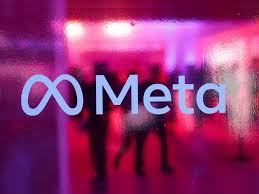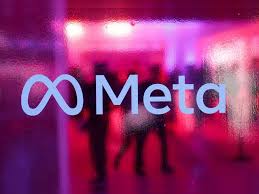
Meta Platforms is launching its biggest-ever bond offering—up to $30 billion—as it accelerates investments in artificial-intelligence infrastructure, data centers and talent at a scale few corporate players have ever attempted. The decision reflects both the urgency Meta feels to scale its AI ambitions and the mounting financial pressures that accompany its shift toward “AI-first” operations. While the move underscores confidence in its long-term prospects, it also highlights how deeply Meta’s business is being transformed—and the risks that transformation carries.
Scaling Ambitions and the Financial Imperative
Meta’s decision to tap the debt markets with such a large issuance is directly tied to its rapidly rising capital-expenditure outlook and mounting cost base. The company has flagged that its investment in AI infrastructure—such as large “supercluster” data centers, custom AI chips, and global compute capacity—has pushed its 2025 capex range up to around $70-72 billion, up from earlier guidance. This level of spending equates to roughly 35-40 % of revenue and signals a dramatic shift in Meta’s capital-intensive priorities.
In parallel, Meta has already struck major financing deals: notably a multi-billion-dollar private financing agreement to fund its “Hyperion” data-center build in Louisiana, demonstrating the scale and immediacy of its execution. By issuing bonds across maturities of 5 to 40 years in a six-part structure, Meta aims to lock in long-term funding to sustain a multi-year build-out of AI infrastructure and talent, rather than relying solely on cash flow or equity issuance. From a strategic vantage, the debt offering is a signal: AI is not just a product initiative—it is the backbone of Meta’s next chapter.
Yet, investors responded with caution. Meta’s shares slid more than 10% following the announcement, as markets grappled with the fact that costs are rising faster than revenue growth (costs increasing ~32% vs. revenue ~26%) and profit margins may feel pressure before the AI investments pay off. The bond market-side, however, showed strong demand—order books reportedly exceeded $100 billion—indicating that fixed-income investors are willing to back Meta’s credit story despite near-term profit concerns.
Why AI Forces Meta to Borrow Big
There are several intertwined drivers behind the decision to borrow at this scale. First: compute and infrastructure. Building AI superclusters is extremely capital intensive: the cost of training frontier AI models has been increasing at an annual rate of more than 2.4× in recent years, with the major items being accelerator chips, servers, interconnect, cooling and energy. Corporations such as Meta cannot absorb that kind of upfront investment purely from operating cash flow without altering their capital structure or raising external funds.
Second: control of key assets. As Meta steps up its presence in AI, it is less reliant on third-party suppliers or licencing of models and more focused on owning the full stack—data centres, custom silicon, inference fleets, and global distribution. That shift from platform-to-platform provider to infrastructure owner demands capital in a new way. Third: timing and competition. Meta is in a race with other tech giants to hire top AI talent, secure locations for hyperscale data centres, and deploy next-gen products. Delaying investment risks falling behind. By raising this debt now, Meta can front-load its build-out, lock costs today, and provide some defence against rising interest rates or inflation on hardware.
Borrowing also gives Meta flexibility. Unlike equity issuance, debt does not dilute ownership, and with long maturities, the company is effectively signaling it expects the payoff from AI to be over a horizon of perhaps 5-15 years. Furthermore, issuing during a window where borrowing costs are still relatively attractive allows the company to hedge part of its long-term cost base.
Balancing Opportunity and Risk
The ambition is clear: Meta believes that the next major value driver for its business will be AI-driven products—everything from advertising personalisation, to immersive experiences, to superintelligence-level capabilities across its platforms. CEO Mark Zuckerberg has spoken of infrastructure so large it would cover a Manhattan-sized footprint, and of models serving a billion users. But heavy front-loaded spending comes with risk. The time lag between building infrastructure and monetising it can be long. The scale of the build-out increases exposure to cost overruns, delays, or shifts in technology.
Investor concerns are visible: Meta’s stock slide reflects unease that large up-front outlays may compress margins or postpone meaningful returns. Meanwhile, regulatory, geopolitical and macro risks also loom—chip supply chain disruption, energy costs, data-centre geopolitics and talent competition all matter. By borrowing $30 billion, Meta is doubling down on its bet, but also committing itself to a large fixed-cost foundation that must generate returns eventually. The fact that it chose bonds (rather than, say, equity) indicates confidence in its creditworthiness, but also a readiness to carry long-term liabilities.
Implications for the Industry and Meta’s Business Model
Meta’s move is emblematic of a broader pivot in Big Tech: from software/advertising growth models toward infrastructure, AI and ownership of compute. The bond sale also signals that corporate debt markets view this shift as investable—even if equity markets remain wary. For Meta itself, success would mean transforming from a social-media and advertising company into a foundational AI platform company. With data centres, custom chips and a global network, it hopes to serve the next generation of AI-driven experiences and monetisation streams.
If successful, the benefits are manifold: lower marginal cost of inference, higher differentiation in product experience, tighter user engagement, and potentially new revenue streams beyond ads (such as enterprise AI services, VR/AR devices or AI-augmented social platforms). But failure to realise returns could hurt profitability, cash flow and investor sentiment. The large bond issuance therefore signals a high-stakes shift in Meta’s identity and financial structure.
In short, Meta’s $30 billion bond sale is not simply a funding event; it is a lever being pulled to support a multi-year transformation of its business economics, capital structure and strategic growth model. As AI expansion costs continue to mount, the size and timing of the borrowing reflect both the urgency of the build-out and the confidence—tempered by investor caution—that Meta is ready to make the leap. How well the company executes and monetises this massive investment will shape its competitive positioning for years to come.
(Source:www.marketscreener.com)
Scaling Ambitions and the Financial Imperative
Meta’s decision to tap the debt markets with such a large issuance is directly tied to its rapidly rising capital-expenditure outlook and mounting cost base. The company has flagged that its investment in AI infrastructure—such as large “supercluster” data centers, custom AI chips, and global compute capacity—has pushed its 2025 capex range up to around $70-72 billion, up from earlier guidance. This level of spending equates to roughly 35-40 % of revenue and signals a dramatic shift in Meta’s capital-intensive priorities.
In parallel, Meta has already struck major financing deals: notably a multi-billion-dollar private financing agreement to fund its “Hyperion” data-center build in Louisiana, demonstrating the scale and immediacy of its execution. By issuing bonds across maturities of 5 to 40 years in a six-part structure, Meta aims to lock in long-term funding to sustain a multi-year build-out of AI infrastructure and talent, rather than relying solely on cash flow or equity issuance. From a strategic vantage, the debt offering is a signal: AI is not just a product initiative—it is the backbone of Meta’s next chapter.
Yet, investors responded with caution. Meta’s shares slid more than 10% following the announcement, as markets grappled with the fact that costs are rising faster than revenue growth (costs increasing ~32% vs. revenue ~26%) and profit margins may feel pressure before the AI investments pay off. The bond market-side, however, showed strong demand—order books reportedly exceeded $100 billion—indicating that fixed-income investors are willing to back Meta’s credit story despite near-term profit concerns.
Why AI Forces Meta to Borrow Big
There are several intertwined drivers behind the decision to borrow at this scale. First: compute and infrastructure. Building AI superclusters is extremely capital intensive: the cost of training frontier AI models has been increasing at an annual rate of more than 2.4× in recent years, with the major items being accelerator chips, servers, interconnect, cooling and energy. Corporations such as Meta cannot absorb that kind of upfront investment purely from operating cash flow without altering their capital structure or raising external funds.
Second: control of key assets. As Meta steps up its presence in AI, it is less reliant on third-party suppliers or licencing of models and more focused on owning the full stack—data centres, custom silicon, inference fleets, and global distribution. That shift from platform-to-platform provider to infrastructure owner demands capital in a new way. Third: timing and competition. Meta is in a race with other tech giants to hire top AI talent, secure locations for hyperscale data centres, and deploy next-gen products. Delaying investment risks falling behind. By raising this debt now, Meta can front-load its build-out, lock costs today, and provide some defence against rising interest rates or inflation on hardware.
Borrowing also gives Meta flexibility. Unlike equity issuance, debt does not dilute ownership, and with long maturities, the company is effectively signaling it expects the payoff from AI to be over a horizon of perhaps 5-15 years. Furthermore, issuing during a window where borrowing costs are still relatively attractive allows the company to hedge part of its long-term cost base.
Balancing Opportunity and Risk
The ambition is clear: Meta believes that the next major value driver for its business will be AI-driven products—everything from advertising personalisation, to immersive experiences, to superintelligence-level capabilities across its platforms. CEO Mark Zuckerberg has spoken of infrastructure so large it would cover a Manhattan-sized footprint, and of models serving a billion users. But heavy front-loaded spending comes with risk. The time lag between building infrastructure and monetising it can be long. The scale of the build-out increases exposure to cost overruns, delays, or shifts in technology.
Investor concerns are visible: Meta’s stock slide reflects unease that large up-front outlays may compress margins or postpone meaningful returns. Meanwhile, regulatory, geopolitical and macro risks also loom—chip supply chain disruption, energy costs, data-centre geopolitics and talent competition all matter. By borrowing $30 billion, Meta is doubling down on its bet, but also committing itself to a large fixed-cost foundation that must generate returns eventually. The fact that it chose bonds (rather than, say, equity) indicates confidence in its creditworthiness, but also a readiness to carry long-term liabilities.
Implications for the Industry and Meta’s Business Model
Meta’s move is emblematic of a broader pivot in Big Tech: from software/advertising growth models toward infrastructure, AI and ownership of compute. The bond sale also signals that corporate debt markets view this shift as investable—even if equity markets remain wary. For Meta itself, success would mean transforming from a social-media and advertising company into a foundational AI platform company. With data centres, custom chips and a global network, it hopes to serve the next generation of AI-driven experiences and monetisation streams.
If successful, the benefits are manifold: lower marginal cost of inference, higher differentiation in product experience, tighter user engagement, and potentially new revenue streams beyond ads (such as enterprise AI services, VR/AR devices or AI-augmented social platforms). But failure to realise returns could hurt profitability, cash flow and investor sentiment. The large bond issuance therefore signals a high-stakes shift in Meta’s identity and financial structure.
In short, Meta’s $30 billion bond sale is not simply a funding event; it is a lever being pulled to support a multi-year transformation of its business economics, capital structure and strategic growth model. As AI expansion costs continue to mount, the size and timing of the borrowing reflect both the urgency of the build-out and the confidence—tempered by investor caution—that Meta is ready to make the leap. How well the company executes and monetises this massive investment will shape its competitive positioning for years to come.
(Source:www.marketscreener.com)














